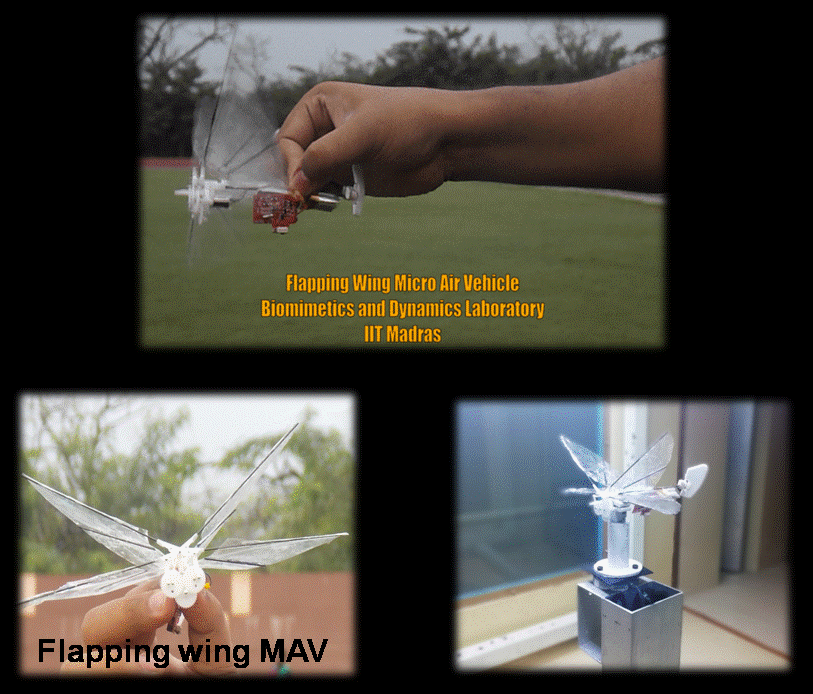
1. Innovative Project sponsored by ICSR, IIT Madras, 2018-2019 (Completed)
Design, Fabrication and Aerodynamic Testing of a Bio-Inspired Flapping-Morphing Wing Micro Aerial Vehicle
PI: Dr. Chandan Bose, Co-PIs: Mr. Dipanjan Majumder, Prof. Sayan Gupta, Prof. Sunetra Sarkar

In this project, we fabricated a single-wing desktop flapping set-up and experimentally tested it in the low speed wind tunnel of the Biomimetics Laboratory, Dept. of Aeroespace Engineering, IIT Madras to measure the aerodynamic loads generated by three different rigid and flexible flapping wings using a 6-dof force/torque sensor. Lift forces were measured for different flapping frequencies and wind speeds. Increase in the inflow velocity was seen to result in a gradual decrease in lift forces for the rigid wing; whereas the lift first decreased and then increased for the flexible wings. An increase in the flapping frequency always resulted in higher lift forces. The flexible wings significantly outperformed the rigid wing at higher flapping frequencies. The effect of a time harmonic gust on the aerodynamic performance was also investigated in this study. The lift forces generated by the rigid wing was seen to be significantly reduced with the increase in the the gust frequency ratio, whereas the flexible wings could overcome this effect. Also, the effect of gust was observed to become dominant at low mean flow speeds. Learning from these outcomes, we designed a four-wing radio-controlled flying model (with flapping and morphing) and tested its aerodynamic performances in the presence of uniform as well as gusty inflows. It was seen that at a higher flapping frequency, its flexible wings could completely alleviate the effect of the gust and the lift force was seen to be increased due to the interaction of the wing flexibility and the gusty fluctuations. However, the generated lift force was still not sufficient to overcome the self-weight of the flying model.
Chandan Bose, Dipanjan Majumdar, Prashant Gollakota, Sunetra Sarkar, Experimental Investigation on the Aerodynamic Load Generation by Asymmetrically Flapping Rigid and Flexible Wings, 7th International and 45th National Fluid Mechanics Fluid Power Conference (FMFP 2018) held at IIT Bombay, India.


